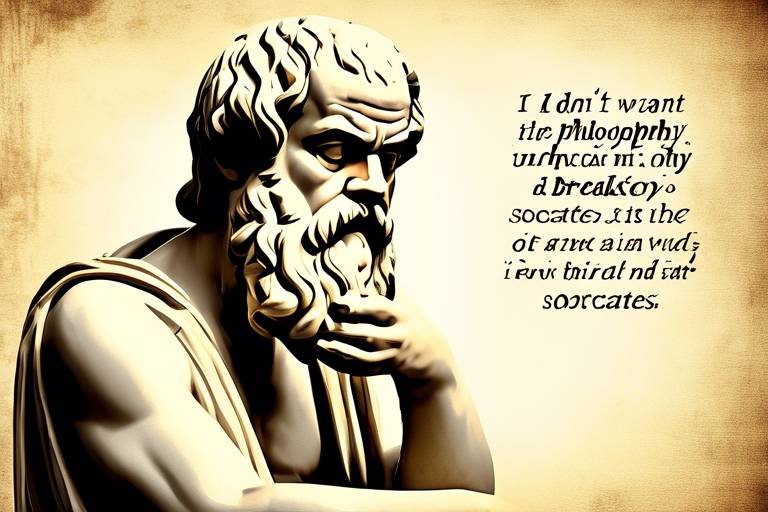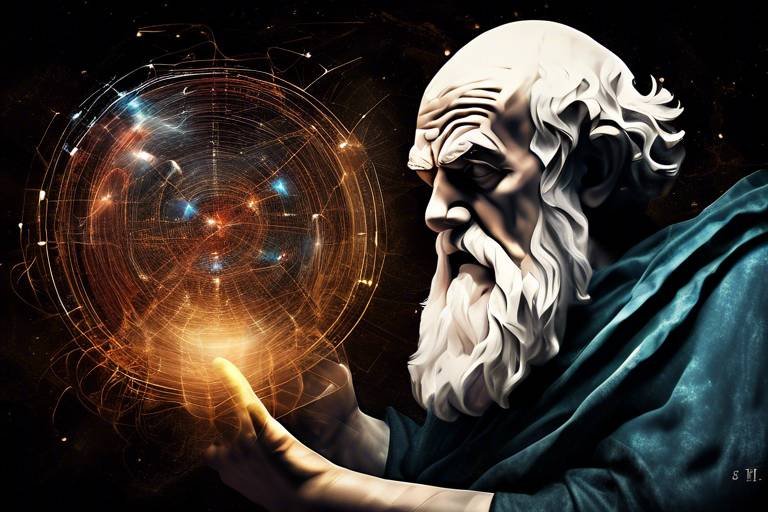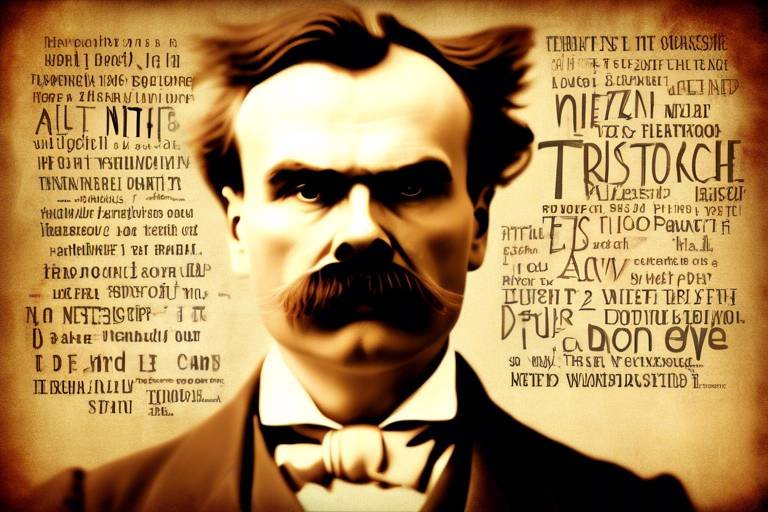A Journey through Aristotle's Metaphysics
Welcome to the fascinating world of Aristotle's metaphysics! This incredible journey takes us deep into the mind of one of history's greatest philosophers, revealing how his thoughts on existence, reality, and the very nature of being have shaped the foundations of Western philosophy. Imagine standing at the crossroads of thought, where science, philosophy, and inquiry intersect, all stemming from Aristotle's profound ideas. As we explore his concepts of substance, causality, potentiality, and actuality, we will uncover the layers of meaning behind these terms and how they resonate through the ages. Are you ready to embark on this intellectual adventure? Let's dive in!
At the heart of Aristotle's metaphysics lies the concept of substance, which he defines as the fundamental reality that underpins all existence. To grasp what it means for something to exist, we must first understand how substances interact with one another in the world. Think of substances as the building blocks of reality, much like the bricks of a house. Without these essential components, nothing could stand. Aristotle posits that substances can be categorized into two types: primary substances, which are individual entities (like a specific tree or person), and secondary substances, which refer to the species or types to which these entities belong (like the species of tree or human). This distinction is crucial for understanding the nature of existence and identity in the metaphysical realm.
To fully appreciate Aristotle's metaphysical framework, we must delve into his theory of the four causes. These causes provide a comprehensive explanation of change and existence. They are:
- Material Cause: What something is made of.
- Formal Cause: The form or essence of a thing.
- Efficient Cause: The agent or process that brings something into being.
- Final Cause: The purpose or reason for something's existence.
Understanding these causes is essential for grasping how Aristotle explains the nature of change and existence within his metaphysical inquiry. Each cause plays a unique role in defining not only what things are but also why they exist in the first place.
The material cause refers to the physical substance out of which something is made. This concept provides profound insight into the nature of objects and their properties. For instance, consider a wooden table. The material cause would be the wood itself, which gives the table its tangible form. Without the wood, there would be no table! This highlights how matter is not merely a backdrop but a vital component in defining the essence of a substance.
Matter plays a crucial role in defining the essence of a substance, influencing its characteristics and identity in the metaphysical landscape. In Aristotle's view, the interplay between matter and form is fundamental to understanding what a substance truly is. Just as a sculptor shapes clay into a statue, the material aspect of a substance helps to shape its identity and purpose.
To further illustrate the concept of material causes, let's consider a few examples:
| Example | Material Cause |
|---|---|
| Statue | Marble |
| Book | Paper |
| Computer | Silicon and Metals |
These examples help illustrate how Aristotle applied the concept of material causes to various entities, enhancing our understanding of their existence.
The formal cause addresses the form or essence of a substance, emphasizing the importance of structure in defining what something is. Think of it as the blueprint of a building; without a solid plan, the structure would lack coherence and purpose. Aristotle believed that understanding the formal cause is essential for grasping the true nature of any entity.
Now, let's explore another fundamental aspect of Aristotle's metaphysics: the distinction between potentiality and actuality. This distinction is vital for explaining how things can exist in a state of possibility before reaching their full realization. Imagine a seed that has the potential to grow into a mighty oak tree. While it exists as a seed, it holds within it the capacity to become something greater.
Potentiality refers to the inherent capacity of a substance to develop into a specific state or form. It highlights the dynamic nature of existence, where possibilities abound. Every substance carries within it the potential to change, grow, and evolve, much like a caterpillar transforming into a butterfly. This concept encourages us to see the world not just as it is but as it could be.
On the other hand, actuality is the realization of potential. It illustrates how substances transition from possibility to concrete existence. Using our earlier example of the seed, once it germinates and grows into a tree, it has achieved its actuality. This transition from potential to actual is at the core of Aristotle's understanding of change, shaping our perception of the world around us.
Aristotle's metaphysical ideas have profoundly influenced Western philosophy, establishing foundational concepts that continue to shape contemporary thought and inquiry in various disciplines. His exploration of substance, causality, and the interplay between potentiality and actuality has laid the groundwork for countless philosophical debates and scientific inquiries. Whether in philosophy, science, or everyday life, Aristotle's insights remind us that understanding the nature of existence is a journey worth taking.
- What is Aristotle's definition of substance? Aristotle defines substance as the fundamental reality that underpins all existence, categorized into primary and secondary substances.
- What are the four causes? The four causes are material, formal, efficient, and final causes, each explaining a different aspect of existence and change.
- How do potentiality and actuality differ? Potentiality refers to the capacity for change, while actuality is the realization of that potential.
- What impact has Aristotle's metaphysics had on modern philosophy? Aristotle's metaphysical ideas have shaped foundational concepts in Western philosophy, influencing various fields of thought.

The Essence of Substance
Aristotle's concept of substance is not just a philosophical notion; it’s the very bedrock upon which he builds his metaphysical framework. To understand what it means for something to exist, we must delve into how Aristotle defines substance and its role in the universe. For him, substance is that which exists independently and is the primary reality. It’s not merely a collection of attributes or properties, but rather the fundamental entity that underlies them. Imagine a tree: while its leaves, bark, and roots can change, the essence of the tree—the substance—remains constant. This is what Aristotle seeks to uncover: the essence that gives things their identity.
In Aristotle's view, substances can be categorized into two main types: primary substances and secondary substances. Primary substances are individual entities, such as a specific horse or a particular tree, while secondary substances refer to the species or genus to which these entities belong. This distinction is crucial as it helps us understand how individual things relate to broader categories. For instance, when we say "this horse," we are referring to a primary substance, but when we say "horse" in general, we are referring to a secondary substance.
Moreover, the essence of substance is intertwined with the concept of form and matter. Aristotle posits that every substance is a composite of both. The form is what gives a substance its identity, while the matter is the physical reality that constitutes it. To illustrate, consider a sculptor creating a statue. The clay (matter) is shaped into a specific form, which is the statue itself. Without matter, there is no substance; without form, the matter lacks identity. This relationship between form and matter is central to Aristotle's metaphysical inquiry and helps us grasp how substances exist and interact in the world.
In summary, the essence of substance, as articulated by Aristotle, is a complex interplay of identity, form, and matter. It challenges us to think deeply about what it means for something to exist and how we categorize the world around us. The implications of this understanding ripple through philosophy and science, influencing how we perceive reality. As we continue to explore Aristotle’s metaphysics, we’ll uncover more layers of this intricate web of existence.

The Four Causes
Aristotle's exploration of the nature of existence is profoundly illustrated through his theory of the Four Causes. These four causes—material, formal, efficient, and final—provide a comprehensive framework for understanding why things are the way they are. Think of these causes as different lenses through which we can view and analyze the world around us. Each cause answers a fundamental question: What is it made of? What is its essence? Who or what brought it into being? And finally, what purpose does it serve?
Understanding these causes is essential for grasping Aristotle's explanation of change and existence within the framework of metaphysical inquiry. By dissecting an object or phenomenon using these four categories, we can appreciate not just its physical attributes, but also its deeper significance in the grand tapestry of reality.
To make this clearer, let's break down each of the four causes:
| Cause | Description | Example |
|---|---|---|
| Material Cause | The substance or matter that composes an object. | A statue made of marble. |
| Formal Cause | The form or arrangement of the matter, defining its essence. | The shape of the statue as envisioned by the sculptor. |
| Efficient Cause | The agent or force that brings the object into existence. | The sculptor who carves the statue. |
| Final Cause | The purpose or end for which the object exists. | The statue's role as a piece of art or a memorial. |
This table summarizes how each cause contributes to our understanding of an object. For instance, when looking at a beautiful statue, one might first consider the material cause—the marble from which it is carved. Then, the formal cause comes into play, as we contemplate the artistic design that gives the statue its identity. Next, we think about the efficient cause, recognizing the sculptor's skill and labor that brought the statue into being. Finally, we arrive at the final cause, pondering the statue's significance and the message it conveys to viewers.
Aristotle's Four Causes not only help clarify the essence of individual objects but also provide a broader perspective on the interconnectedness of all things. By applying this framework, we can appreciate the complexity of existence and the myriad factors that contribute to the reality we perceive. It's like peeling back the layers of an onion; each layer reveals something new and essential, helping us understand the complete picture.
In conclusion, Aristotle's Four Causes serve as a powerful tool for philosophical inquiry. They invite us to ask deeper questions about the world and challenge us to look beyond mere appearances. By engaging with these concepts, we can develop a richer understanding of the nature of existence itself.

When we delve into Aristotle's metaphysics, one of the most intriguing concepts that arises is the notion of material cause. This idea is essential for understanding not just what things are made of, but also how those materials influence the very essence of objects. Imagine a sculptor standing before a block of marble. The marble, in this analogy, represents the material cause—it is the physical substance that will be transformed into a magnificent statue. Without this material, the statue cannot exist, highlighting the importance of the material cause in defining the nature and identity of an object.
Aristotle believed that everything in the world is made up of matter, which plays a crucial role in determining the properties and characteristics of substances. Think about it: the chair you sit on, the water you drink, and even the air you breathe all have a material cause. They are not just random collections of atoms; they possess specific qualities that make them suitable for their functions. For instance, a wooden chair is sturdy and reliable, while a plastic one might be lightweight and flexible. The material cause, therefore, is integral to our understanding of existence itself.
To illustrate this concept further, let’s consider some examples of material causes:
- Wood: The material cause of a wooden table is the wood itself, which determines its durability and style.
- Metal: The metal used in a car influences its strength and performance, showcasing how material affects functionality.
- Clay: In pottery, the clay serves as the material cause that allows the artist to shape and mold their creations.
In essence, the material cause is not just about what something is made of; it also encompasses the potential that material holds. The properties of the material can dictate how a substance will behave, react, or even evolve over time. This understanding leads us to appreciate the interconnectedness of matter and form, where the material cause lays the groundwork for the formal cause—how the substance is structured and understood. Thus, when we consider Aristotle’s view on material causes, we are invited to explore a deeper layer of reality, one that reveals the intricate dance between matter and essence.
Q: What is the material cause according to Aristotle?
A: The material cause refers to the physical substance out of which something is made, which helps define its properties and characteristics.
Q: Can you give an example of a material cause?
A: Sure! For instance, the material cause of a glass vase is the glass itself, which determines its transparency and fragility.
Q: Why is understanding material cause important?
A: Understanding material cause is crucial because it helps us grasp how different substances influence the existence and characteristics of objects in our world.

When we dive into Aristotle's metaphysics, one of the most intriguing aspects we encounter is the role of matter in defining the essence of a substance. Matter isn’t just a passive player in the game of existence; it’s the very foundation upon which everything is built. Imagine trying to bake a cake without flour, sugar, or eggs. These ingredients are what give the cake its structure and identity, just as matter provides the physical substance necessary for any entity to exist. Aristotle believed that every tangible object in our world is composed of matter, and understanding this is crucial for grasping how substances interact and change over time.
In Aristotle's view, matter is not merely a collection of particles; it embodies the potential of what a substance can become. This is where things get fascinating! Matter holds the key to the transformation of potentiality into actuality. For instance, consider a block of marble. It possesses the potential to become a stunning statue, but until an artist chisels away at it, that potential remains dormant. This relationship between matter and form is essential in understanding how things evolve and acquire their unique identities.
Moreover, the role of matter can be categorized into several key aspects:
- Identity: Matter contributes to the identity of a substance. Without its specific material components, an object cannot maintain its characteristics.
- Change: Matter is involved in the processes of change. When substances undergo transformation, it is often the matter that is altered, leading to new forms and identities.
- Interrelation: Matter interacts with form to create the essence of an object. This interplay is what allows for the diversity of substances in the universe.
To illustrate this further, let's consider a simple table. The wood, nails, and glue that make up the table are its matter. Without these materials, the table would not exist. If we were to change the wood to metal, the table's identity shifts, showcasing how matter influences the essence of objects. Here’s a quick comparison:
| Material | Identity of Object |
|---|---|
| Wood | Wooden Table |
| Metal | Metal Table |
| Plastic | Plastic Table |
In conclusion, understanding the role of matter in Aristotle's metaphysics is akin to understanding the very essence of existence itself. Matter is not just what things are made of; it is a dynamic participant in the unfolding story of reality. By examining how matter interacts with form, we gain deeper insights into the nature of change, identity, and the very fabric of the universe. This perspective not only enriches our philosophical inquiries but also influences various fields, including science, art, and even technology.
- What is the significance of matter in Aristotle's philosophy?
In Aristotle's philosophy, matter is essential for understanding the nature of substances and their changes. It provides the physical foundation that allows potentiality to become actuality.
- How does matter relate to form?
Matter and form are interdependent; matter gives substance its physical characteristics, while form defines its essence and identity.
- Can matter exist without form?
In Aristotle's view, matter cannot exist independently of form; they are two aspects of the same reality that together define what a substance is.

To truly grasp Aristotle's notion of material causes, it's essential to explore some concrete examples that illuminate how this concept operates in the real world. Think of material causes as the building blocks of existence; they form the very essence of what something is. For instance, consider a wooden table. The material cause of this table is the wood itself. Without the wood, there would be no table. This simple yet profound understanding helps us appreciate the significance of the materials that compose various objects around us.
Another excellent example can be found in the realm of art. Take a sculpture made of marble. The marble serves as the material cause, providing not just the substance but also influencing the sculpture's texture and durability. The qualities of the marble—its color, hardness, and grain—directly impact the final appearance and longevity of the artwork. This interplay between material and form emphasizes that the essence of an object is deeply tied to its constituent materials.
In the world of biology, consider a living organism, such as a tree. The material cause here encompasses everything from its roots to its leaves. Each part is made up of various materials, including water, nutrients, and organic compounds. The specific combination of these materials determines the tree's growth, health, and overall identity. Thus, understanding the material cause allows us to appreciate how different organisms thrive in their environments.
To further clarify Aristotle's concept, let's look at a simple table that categorizes some common examples of material causes:
| Object | Material Cause |
|---|---|
| Wooden Table | Wood |
| Marble Sculpture | Marble |
| Tree | Water, Nutrients, Organic Compounds |
| Glass Window | Glass |
| Steel Bridge | Steel |
These examples illustrate that the material cause is not merely about what something is made of; it also encompasses how those materials interact and influence the final product. By understanding the material cause, we can better appreciate the intricacies of the world around us and the fundamental principles that govern existence. This insight into material causes not only enriches our understanding of Aristotle's metaphysics but also invites us to look more closely at the materials that shape our daily lives.
- What is a material cause? A material cause refers to the physical substance out of which something is made, influencing its characteristics and identity.
- Can you give more examples of material causes? Sure! Examples include the wood in a wooden chair, the clay in a pottery piece, and the metal in a car.
- Why is understanding material causes important? Understanding material causes helps us grasp how objects exist and interact in the world, providing deeper insights into their nature.
- How does Aristotle's concept of material cause apply to modern science? Aristotle's material cause lays the groundwork for understanding matter in various scientific fields, including physics and biology.

When we dive into the concept of formal cause, we’re essentially peering into the very blueprint of existence. Aristotle believed that to truly understand a substance, we must grasp its form or essence. Think of it like a recipe: just as a recipe outlines the specific ingredients and steps needed to create a dish, the formal cause defines the essential characteristics that make a substance what it is. This concept is crucial because it emphasizes that the identity of an object is not merely a result of its material composition but is deeply rooted in its structure and form.
To illustrate, let’s consider a classic example: a statue. The material cause of the statue might be the marble from which it is carved, but the formal cause is the shape or design that the sculptor envisions. It’s not enough to just have marble; there needs to be an idea or form that the marble takes on to become a statue. Without that guiding form, the marble remains just a block of stone, lacking identity and purpose.
Aristotle categorized the formal cause as one of four essential components for understanding change and existence. Here’s a quick breakdown:
| Cause Type | Description |
|---|---|
| Material Cause | The physical substance out of which something is made. |
| Formal Cause | The form or essence that defines what something is. |
| Efficient Cause | The agent or process that brings something into being. |
| Final Cause | The purpose or end for which something exists. |
So, when we ponder the nature of a tree, we can identify its material cause (the wood), but its formal cause is the specific arrangement of its branches, leaves, and trunk that defines it as a tree rather than a bush or a flower. This distinction is vital in the realm of metaphysics, as it allows us to appreciate the complexity of existence beyond mere physicality.
In essence, the formal cause is what gives meaning to the material. It’s like the soul of an object, infusing it with identity and purpose. Without understanding this cause, one might view the world as a collection of random materials rather than a coherent tapestry of forms and essences. Aristotle's insights into formal cause have not only shaped philosophical thought but have also laid the groundwork for various fields, including science, art, and even psychology. By recognizing the importance of form, we can better appreciate the intricate relationships between objects and their inherent meanings.
- What is the formal cause in Aristotle's metaphysics?
The formal cause refers to the essence or form that defines what a substance is, distinguishing it from other substances. - How does formal cause differ from material cause?
While the material cause focuses on the physical substance of an object, the formal cause emphasizes its structure and identity. - Can you give an example of formal cause?
Sure! In the case of a chair, the formal cause is the design or shape that makes it recognizable as a chair, rather than just a pile of wood. - Why is understanding formal cause important?
Understanding formal cause helps us appreciate the deeper meanings behind objects and their roles in the world, influencing fields like philosophy, science, and art.

Aristotle's distinction between potentiality and actuality is not just a philosophical nuance; it’s a profound inquiry into the nature of existence itself. Imagine a seed buried in the soil. It has the potential to grow into a magnificent oak tree, but until the right conditions are met—sunlight, water, and time—it remains just that: a seed. This analogy beautifully captures the essence of potentiality. In Aristotle's framework, potentiality refers to the inherent capacity of a substance to develop into a specific state or form. It embodies the possibilities that lie within an object, waiting for the right circumstances to unfold. This concept invites us to consider not just what things are, but what they can become.
On the flip side, we have actuality, which is the realization of that potential. Continuing with our seed analogy, once it receives the necessary elements, it sprouts and begins its journey toward becoming an oak. Actuality is the manifestation of potential; it’s the point where possibilities become tangible realities. Aristotle emphasizes that everything in the universe is in a constant state of flux, moving between these two states. This dynamic interplay is what drives change and development in the world around us.
To better understand these concepts, let’s explore them further with a few key aspects:
| Aspect | Potentiality | Actuality |
|---|---|---|
| Definition | The capacity to develop into a specific state or form | The realization of potential; the state of being |
| Example | A seed that can grow into a tree | The fully grown tree |
| Philosophical Implication | Possibility and latent qualities | Actual existence and manifestation |
This interplay between potentiality and actuality is not just limited to the realm of biology; it extends to all aspects of life and existence. For example, consider a young artist. They may have the potential to create breathtaking masterpieces, but until they pick up that brush and start painting, their talent remains unexpressed. This realization can be empowering, as it highlights that our current state is merely a snapshot in an ongoing journey. We are all in various stages of potentiality and actuality, constantly evolving and transforming.
In the grand scheme of Aristotle's metaphysics, understanding this distinction is crucial for grasping the essence of change. It shapes our understanding of how entities come into being and how they evolve over time. By recognizing the potential within ourselves and the world around us, we can appreciate the dynamic nature of existence. It encourages us to not just accept things as they are but to envision what they can become. This perspective has far-reaching implications, not only in philosophy but also in science, art, and personal growth.
- What is the difference between potentiality and actuality?
Potentiality refers to the capacity for something to develop into a certain state, while actuality is the realization of that capacity. - How do potentiality and actuality relate to change?
Change is the process through which potentiality is realized as actuality, illustrating the dynamic nature of existence. - Can potentiality exist without actuality?
Yes, potentiality can exist independently as a latent quality, but it requires the right conditions to be realized as actuality.
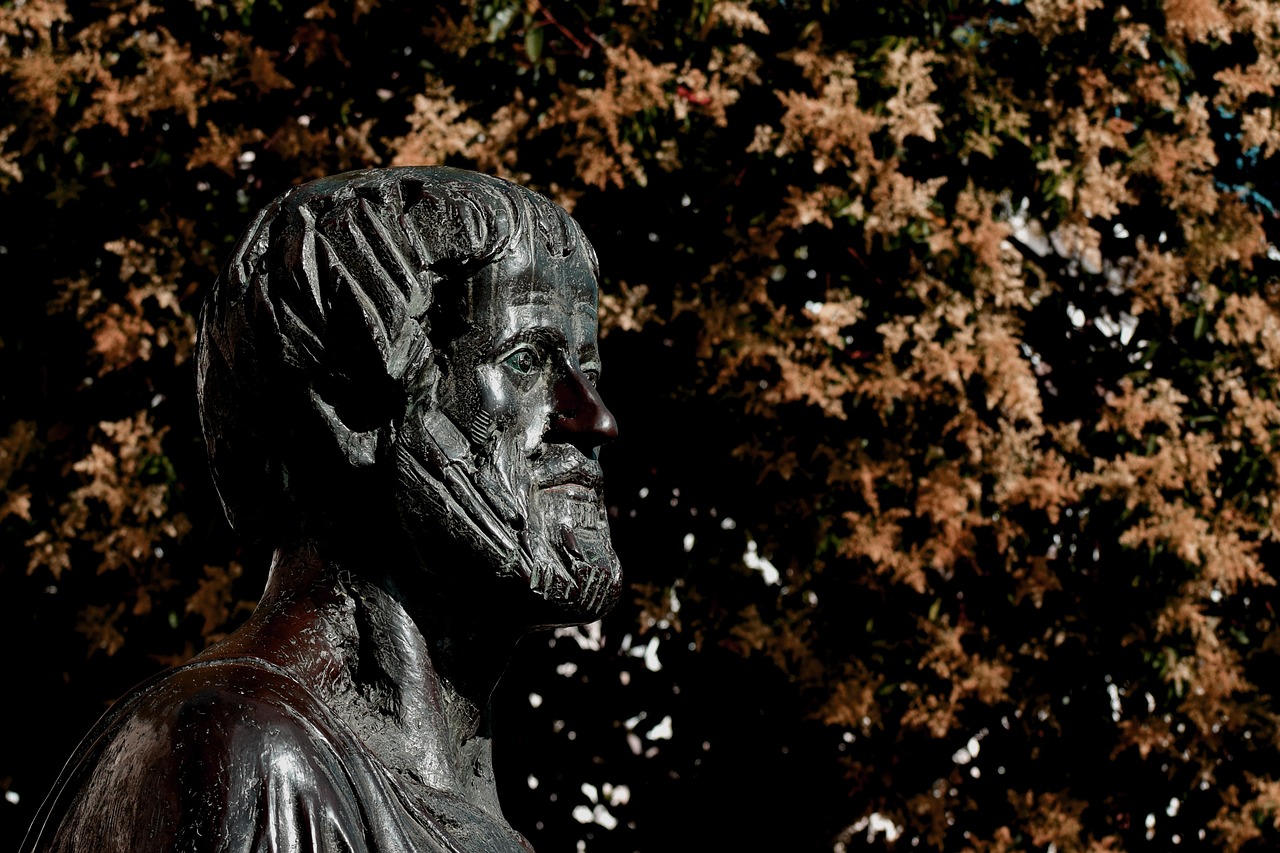
When we dive into Aristotle's concept of potentiality, we are tapping into a rich vein of philosophical thought that reveals how substances possess the inherent capacity to transform and evolve. Imagine a seed buried in the ground. At first glance, it appears to be just a small, lifeless object. However, within that tiny seed lies the potential to grow into a magnificent tree, bearing fruit and providing shade. This illustrates the essence of potentiality: the idea that existence is not static but rather a dynamic process of becoming.
Potentiality is not merely about what something can become; it also encompasses the idea of latent possibilities that exist within a substance. For Aristotle, every substance has a specific nature, which determines its potential. This means that a particular object can only realize certain possibilities based on its inherent characteristics. For instance, a block of marble has the potential to be sculpted into a statue, but it will always remain a block unless an artist intervenes to actualize that potential.
To further clarify this concept, let’s consider some key aspects of potentiality:
- Inherent Capacity: Every substance possesses an intrinsic ability to develop into a specific form or state.
- Dynamic Nature: Potentiality emphasizes that existence is a process, not a fixed state. It highlights the journey of becoming.
- Limitations: The realization of potential is bound by the substance's nature; not all potentials can be actualized.
Aristotle’s exploration of potentiality is crucial because it allows us to understand how change occurs in the world around us. It provides a framework for examining the transformations that substances undergo, whether in nature, art, or even in human development. Think about a child's growth: the potential for learning and becoming an adult is present from birth, yet it requires nurturing and experience to actualize that potential. This interplay between potentiality and actuality is what makes existence so fascinating and complex.
In summary, potentiality serves as a foundational concept in Aristotle's metaphysics, illustrating how substances are not mere static entities but rather dynamic beings full of possibilities waiting to be realized. By grasping this idea, we can appreciate the intricate dance of existence, where every moment holds the power of transformation. It’s like watching a caterpillar inch its way toward becoming a butterfly—full of potential, just waiting for the right conditions to emerge into something extraordinary.
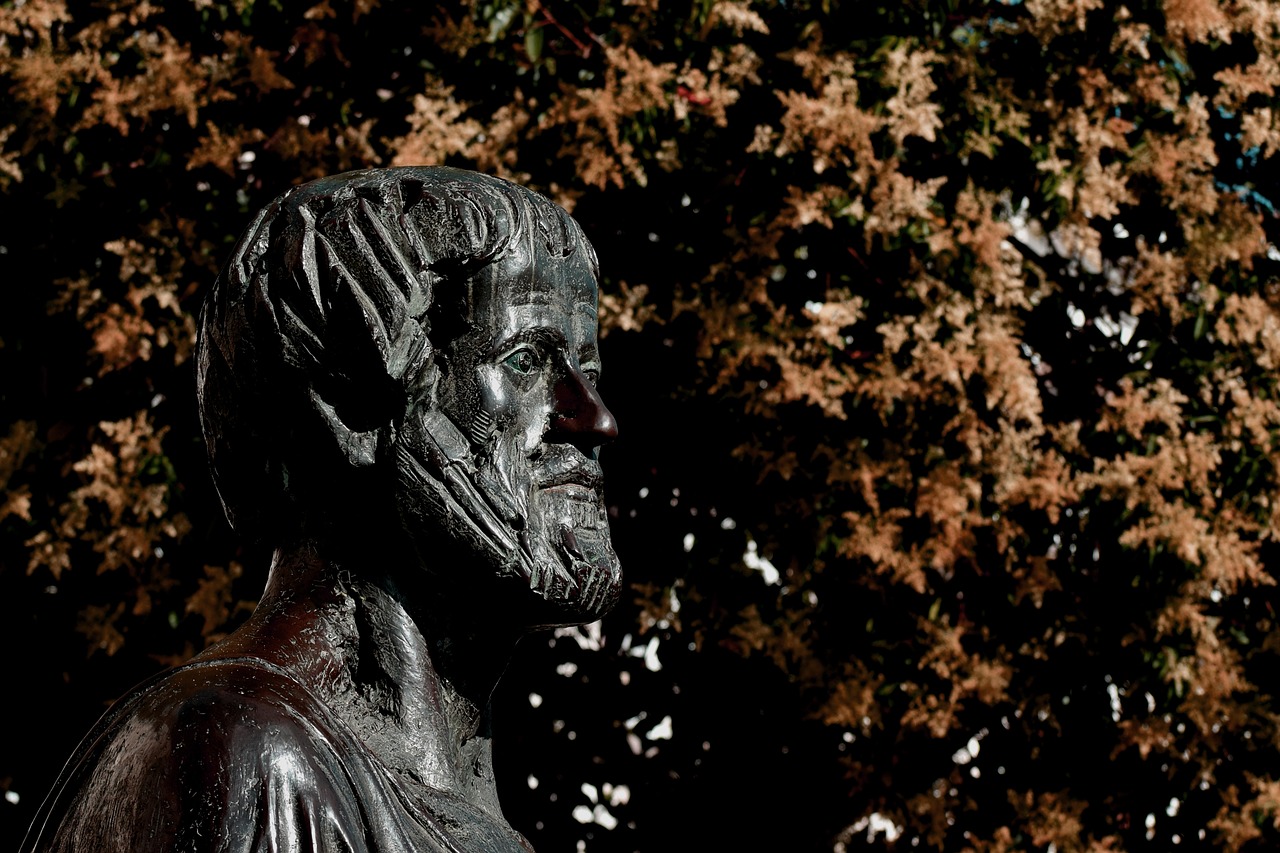
When we dive into the concept of actuality in Aristotle's metaphysics, we're stepping into a fascinating realm where potential becomes real. Imagine a seed planted in the ground. It holds within it the potential to grow into a towering tree, but until it sprouts, that potential remains just that—potential. This is the crux of what Aristotle means by actuality: the moment when a possibility transitions into reality. In essence, actuality represents the fulfillment of potential, where something exists in its complete and definitive form.
To further illustrate this concept, let's break down the relationship between potentiality and actuality. Think of a sculptor with a block of marble. The block of marble has the potential to become a magnificent statue, but it is only when the sculptor chisels away at it that the statue comes into being. Here, the sculptor's actions are crucial; they serve as the bridge connecting the potential of the marble to its actual form. Aristotle emphasizes that actuality is not merely about existence; it's about the complete manifestation of a substance's essence.
In Aristotle's view, everything in the universe is in a constant state of flux, moving from potentiality to actuality. This transition is not random; it follows a natural order and is influenced by various factors. For instance, consider the following table that summarizes the key differences between potentiality and actuality:
| Aspect | Potentiality | Actuality |
|---|---|---|
| Definition | The capacity for something to develop into a certain form | The realization of that capacity in a concrete form |
| Example | A seed that can grow into a tree | A fully grown tree |
| Nature | Dynamic and latent | Static and manifest |
| State of Existence | Possible | Actual |
This table encapsulates the essence of how potentiality and actuality function within Aristotle's metaphysical framework. It highlights that while potentiality is about what could be, actuality is about what is. In a world where change is the only constant, understanding this distinction allows us to grasp the nature of existence itself.
Moreover, Aristotle argues that understanding actuality is vital for comprehending the nature of change. When something actualizes, it undergoes a transformation that is both profound and significant. This process is not just about physical changes; it also encompasses the realization of abilities, talents, and even ideas. Think about it: when we learn a new skill, we are actualizing our potential. The journey from being a novice to becoming proficient is a perfect example of how potentiality unfolds into actuality.
In summary, actuality is a cornerstone of Aristotle's metaphysical thought. It invites us to reflect on our own lives and the myriad potentials we hold within us. By recognizing the journey from potential to actual, we can appreciate the beauty of existence in all its forms, understanding that every moment of realization is a testament to the dynamic interplay of possibility and reality.

Aristotle's metaphysics has left an indelible mark on the landscape of Western philosophy and science, shaping the way we understand existence, reality, and the nature of objects. His ideas have transcended time, influencing not just philosophers but also scientists, theologians, and thinkers across various disciplines. To grasp the full extent of his impact, we must delve into how his concepts have been integrated and adapted over centuries.
One of the most significant contributions of Aristotle's metaphysics is the idea of substance. This notion has become a cornerstone in both philosophical debates and scientific inquiries. For instance, in modern science, the quest to understand the fundamental building blocks of matter echoes Aristotle's exploration of what constitutes a substance. The way we categorize elements in chemistry can be traced back to his emphasis on the essence and properties of substances. Moreover, the distinction between potentiality and actuality has profound implications in fields ranging from physics to psychology, where the development of theories often hinges on understanding how things come to be and change over time.
Furthermore, Aristotle's framework of the Four Causes—material, formal, efficient, and final—offers a comprehensive approach to explaining phenomena. This holistic view has been adopted and modified by various thinkers, including medieval scholars who sought to reconcile Aristotelian philosophy with religious doctrines. For example, the integration of Aristotle’s final cause into Christian theology helped shape the understanding of purpose in creation, influencing the works of philosophers like Thomas Aquinas.
The ripple effects of Aristotle's metaphysics can also be seen in contemporary debates in ethics and political philosophy. His exploration of the essence of human nature and the concept of virtue ethics has inspired modern discussions about morality and the good life. Thinkers like Immanuel Kant and John Stuart Mill, while diverging from Aristotle in many respects, still grapple with the implications of his ideas on human potential and ethical behavior.
Moreover, the resurgence of interest in Aristotelian thought during the Renaissance sparked a revival of metaphysical inquiry that laid the groundwork for modern scientific methods. The emphasis on observation and categorization can be traced back to Aristotle's insistence on understanding the world through empirical investigation. This methodological approach has paved the way for the scientific revolution, influencing figures such as Galileo and Newton, who sought to explain natural phenomena through systematic study.
In addition to philosophy and science, Aristotle's metaphysics has also permeated the realms of art and literature. The concept of form and its relationship to substance has influenced artistic expressions, prompting artists to consider the essence of their creations and the nature of beauty. Writers and poets have drawn upon Aristotelian themes to explore the human condition, existence, and the nature of reality in their works.
To summarize the profound influence of Aristotle's metaphysics, we can highlight a few key areas:
- Philosophy: Establishing foundational concepts that continue to shape philosophical discourse.
- Science: Influencing methodologies and the classification of natural phenomena.
- Theology: Providing a framework for understanding purpose and existence in religious contexts.
- Ethics: Inspiring discussions on virtue, morality, and the good life.
- Art and Literature: Affecting how creators perceive and express the essence of their work.
In conclusion, Aristotle's metaphysics serves as a rich tapestry woven into the very fabric of Western thought. Its influence is not just historical; it is a living legacy that continues to provoke inquiry and inspire innovation across various fields. As we navigate the complexities of existence, Aristotle's insights remind us of the enduring quest for understanding that defines the human experience.
1. What is the main focus of Aristotle's metaphysics?
Aristotle's metaphysics primarily focuses on the nature of existence, substance, and the principles that govern change and reality.
2. How did Aristotle's ideas influence modern science?
His emphasis on empirical observation and categorization laid the groundwork for the scientific method, influencing how we study and understand the natural world.
3. What are the Four Causes in Aristotle's philosophy?
The Four Causes are material, formal, efficient, and final causes, which provide a comprehensive framework for explaining why things exist and change.
4. How does Aristotle's concept of potentiality and actuality apply today?
These concepts help us understand the processes of development and change in various fields, from biology to psychology.
5. Why is Aristotle considered a foundational figure in Western philosophy?
His systematic approach to metaphysics and ethics has profoundly shaped philosophical discourse, influencing countless thinkers and disciplines throughout history.
Frequently Asked Questions
- What is Aristotle's concept of substance?
Aristotle's concept of substance is a fundamental idea in his metaphysics. He defines substance as what makes something exist and gives it identity. In this view, substances are the primary entities in the world, and understanding them helps us grasp how different entities interact and relate to one another.
- What are the four causes according to Aristotle?
Aristotle identifies four causes that explain why things exist as they do: material cause (the substance out of which something is made), formal cause (the form or essence of a thing), efficient cause (the agent or process that brings something into being), and final cause (the purpose or end for which something exists). These causes provide a comprehensive framework for understanding change and existence.
- Can you explain potentiality and actuality?
Absolutely! Potentiality refers to the inherent capacity of a substance to develop into a certain state or form, while actuality is the realization of that potential. Think of a seed—it's full of potential to grow into a tree, but it only becomes an actual tree when it undergoes the necessary changes. This distinction is crucial for understanding how things evolve and change in the world.
- How did Aristotle's metaphysics influence later philosophy?
Aristotle's metaphysical ideas laid the groundwork for much of Western philosophy. His concepts of substance, causality, and potentiality vs. actuality have shaped various fields, including science, ethics, and theology. Philosophers throughout history have built upon his ideas, making his work a cornerstone of philosophical inquiry.
- What role does matter play in Aristotle's metaphysics?
Matter is crucial in Aristotle's metaphysics as it constitutes the material cause of substances. It influences the characteristics and identity of an object, essentially shaping what it is. Understanding matter helps us appreciate how different substances interact and change in the metaphysical landscape.




